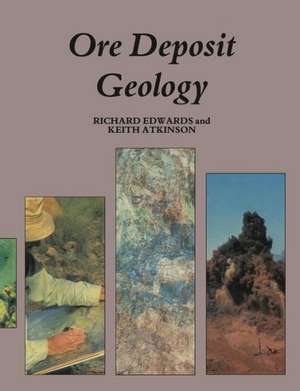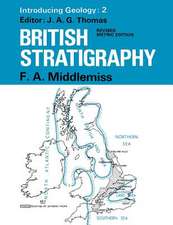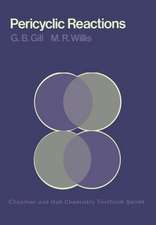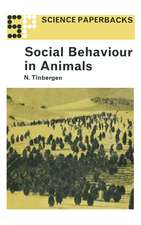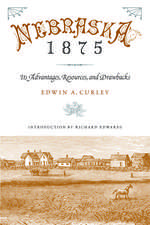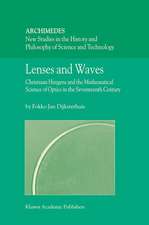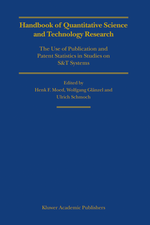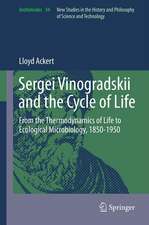Ore Deposit Geology and its Influence on Mineral Exploration
Autor Richard Edwardsen Limba Engleză Paperback – 16 apr 2012
Preț: 715.64 lei
Preț vechi: 841.93 lei
-15% Nou
Puncte Express: 1073
Preț estimativ în valută:
136.95€ • 142.80$ • 113.82£
136.95€ • 142.80$ • 113.82£
Carte tipărită la comandă
Livrare economică 20 martie-03 aprilie
Preluare comenzi: 021 569.72.76
Specificații
ISBN-13: 9789401180580
ISBN-10: 940118058X
Pagini: 484
Ilustrații: XVI, 466 p.
Dimensiuni: 189 x 246 x 25 mm
Greutate: 0.94 kg
Ediția:Softcover reprint of the original 1st ed. 1986
Editura: SPRINGER NETHERLANDS
Colecția Springer
Locul publicării:Dordrecht, Netherlands
ISBN-10: 940118058X
Pagini: 484
Ilustrații: XVI, 466 p.
Dimensiuni: 189 x 246 x 25 mm
Greutate: 0.94 kg
Ediția:Softcover reprint of the original 1st ed. 1986
Editura: SPRINGER NETHERLANDS
Colecția Springer
Locul publicării:Dordrecht, Netherlands
Public țintă
ResearchCuprins
1 Introduction.- 1.1 Objectives and reasons for the approach taken.- 1.2 Mineral deposit or mine?.- 1.3 A genetic model as the basis for exploration.- 1.4 The scientific study of mineral deposits.- References.- 2 Magmatic Deposits.- 2.1 Introduction.- 2.2 Chromite deposits.- 2.3 Nickel sulphide deposits.- 2.4 Kimberlites.- 2.5 Concluding statement.- References.- 3 Magmatic Hydrothermal Deposits.- 3.1 Introduction.- 3.2 Porphyry copper deposits.- 3.3 Exploration for porphyry copper deposits.- 3.4 Porphyry molybdenum deposits.- 3.5 Exploration for porphyry molybdenum deposits.- 3.6 Porphyry gold deposits.- 3.7 Porphyry tin deposits.- 3.8 Volcanic-associated massive sulphide deposits.- 3.9 Exploration for volcanogenic sulphide deposits.- 3.10 Concluding statement.- References.- 4 Hydrothermal Vein Deposits.- 4.1 Introduction.- 4.2 Classification of hydrothermal vein deposits.- 4.3 Classification of hydrothermal gold deposits.- 4.4 Hydrothermal gold deposits in Archaean terrain.- 4.5 Exploration for gold in Archaean terrain.- 4.6 Concluding statement.- References.- 5 Placers and Palaeo-Placers.- 5.1 Introduction.- 5.2 Placer deposits.- 5.3 Eluvial (residual), colluvial and fluvial (alluvial) deposits.- 5.4 Beach sand deposits.- 5.5 Marine placers.- 5.6 Palaeo-placer deposits.- 5.7 Concluding statement.- References.- 6 Sediment-Hosted Copper-Lead-Zinc Deposits.- 6.1 Introduction.- 6.2 Sediment-hosted copper deposits.- 6.3 Syngenetic and diagenetic lead-zinc deposits in shales and carbonates (sedimentary-exhalative deposits).- 6.4 Epigenetic carbonate-hosted lead-zinc deposits (Mississippi Valley-type).- 6.5 Exploration for Mississippi Valley-type deposits.- 6.6 Concluding statement.- References.- 7 Ore Deposits Formed by Weathering.- 7.1 Introduction.- 7.2 Bauxite deposits.-7.3 Lateritic nickcl deposits.- 7.4 Kaolin deposits.- 7.5 Supergene manganese deposits.- 7.6 Supergene sulphide enrichment.- 7.7 Concluding statement.- References.- 8 Iron Ores of Sedimentary Affiliation.- 8.1 Introduction.- 8.2 Classification of iron ores.- 8.3 General characteristics of iron-formation.- 8.4 Genesis of iron-formation.- 8.5 Enriched haematitc ore deposits.- 8.6 The Hamersley Basin — an example of banded iron-formation and associated enrichment ores.- 8.7 Exploration.- 8.8 Evaluation.- 8.9 Concluding statement.- References.- 9 Uranium Ores of Sedimentary Affiliation.- 9.1 Introduction.- 9.2 Geochemistry of uranium in the secondary environment.- 9.3 Unconformity-type uranium deposits of the Northern Territory, Australia and Northern Saskatchewan, Canada.- 9.4 Sandstone-hosted uranium deposits of the western USA.- 9.5 Concluding statement.- References.- 10 Ores Formed by Metamorphism.- 10.1 Introduction.- 10.2 Skarns.- 10.3 Skarn deposits.- 10.4 Classification of skarn deposits.- 10.5 Genesis of skarn deposits.- 10.6 Exploration for skarns.- 10.7 Concluding statement.- References.- 11 The Design and Implementation of Exploration Programmes.- 11.1 Introduction.- 11.2 Who undertakes exploration?.- 11.3 Factors affecting exploration programmes.- 11.4 The exploration programme.- 11.5 Concluding statement.- References.- Mineral list.
